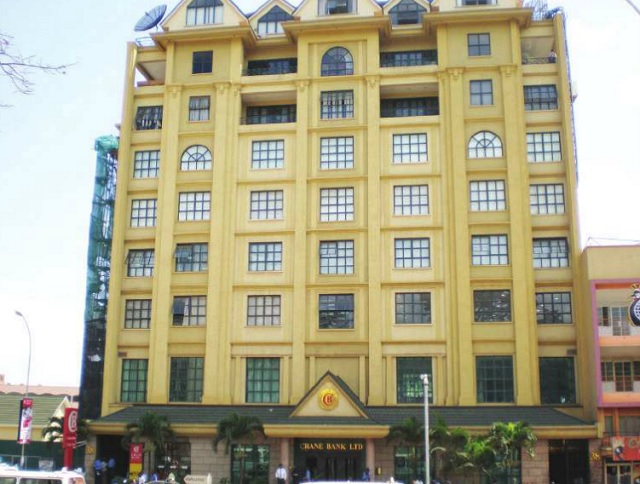
With the Crane Bank being placed under Central Bank management and several other commercial banks being asked to recapitalise, the banking sector in Uganda seems to be under a lot of stress lately. What seems to have brought down Crane Bank does not seem to be a Crane Bank problem alone but may possibly be a systemic problem for the entire banking sector, writes Juddie Kilungu.
The impact of commercial bank stress will be felt most by manufactures, traders, and other major private sector players. In a series of interviews with leaders of these three very crucial economic sectors, it became clear that, in their view, that the banking sector would face challenges has been a matter of when not if. It was only a matter of time.
Everest Kayondo, the Chairman for Kampala City Traders Association (KACITA) told The Independent that they predicted the situation the banks are going through now in 2011/2012. At the time, interest rates were hiked on both new and old loans.
Kayondo says the bank felt confident to raise their interest rates because they had an assured market –from the government which was also borrowing from the same commercial banks.
“Since government is risk free, the banks prefer lending to government with government rates and since they can’t lend to the private sector that are not risk free with the same rates, they end up increasing their rates.
“Risk free lending should be non-existent or non-competitive. If government is borrowing at 15% that means no bank will lend to the public at 15%they will lend at higher rates. But if government decides to borrow from outside Uganda then that makes them less competitive to the traders and then there will be breathing space for the traders to borrow,” Kayondo says.
The raised interest rates banks gave commercial banks an unprecedented boom in profitability. Kayondo says most banks realised profits up to 50% during that time. He also says that banks declared higher dividends for the shareholders. Unfortunately, since most banks deposits, over 70%, are controlled by foreign shareholders in foreign banks in Uganda; the high earnings were repatriated out of the country in foreign exchange. In the end, the bank boom impacted negatively on the economy.
Real can of worms
Meanwhile, Kayondo says, the banks were saddled with a new problem.
“People had borrowed on a different cash flow but were now paying on new cash flow,” he says, “that meant that the default rate would go high.”
In his view, the short term profits which would have been declared because of the increase rates, ended up causing higher default rates and created a vicious circle.
“It became a self-defeating game,” Kayondo says, “That is exactly what is eating up not only Crane Bank but the entire banking industry.
“Our advice then was if they were to increase interest rates, they would have increased on new loans and left the old loans alone such that they just impede credit growth and they live with already existing loans,” Kayondo explains. According to him, the banking sector rejected any advice and dubbed any critics of their policies as “prophets of doom”. But, Kayondo says, because of bad policies of Bank of Uganda, the Non-performing Loans in the Ugandan banking market has increased from 3% to 8% in one year, 2016, alone.
“I will not be surprised if it goes up to10%,” he says.
On Crane Bank specifically, Kayondo finds it paradoxical in that the bank – which is a holding company in Uganda – went under yet its subsidiaries are flourishing.
“The holding company in Uganda is going under but their subsidiaries in Rwanda were declared to be financially sounding. Some of us are tempted to think that funds could have been taken from the holding company and pumped into the subsidiary deliberately for reasons best known by the shareholders,” he says.
“Either they do not trust the economy of Uganda or they have their own reasons as to why they should sustain the subsidiary while the holding company is losing ground. That is where I am beaten as an economist,” he adds.
He says the government needs to dig a little bit deeper and establish the real problem.
Until recently, Crane Bank was one of the high performing banks and had made it a bit easier for traders to access financing on time between application for the loan, appraisal and the final disbursement. Many traders were lured into saving and borrowing from the bank.
Kayondo says that means most of the arcades in Kampala are on the borrowed money from Crane Bank.
“If we get a real estate bubble,” he says, “it will be Crane Bank that will have sparked off the real can of worms.”
He says there might soon be a very big supply of arcades on sale if most of the arcades were among the Non-performing Loans of Crane Bank and yet the would-be potential buyers are also the real defaulters.
Mr. Kayondo warns other banks and asks them to realize that whatever happened to crane bank is coming to catch up with them so they should act very fast and reduce interest rates.
 The Independent Uganda: You get the Truth we Pay the Price
The Independent Uganda: You get the Truth we Pay the Price



